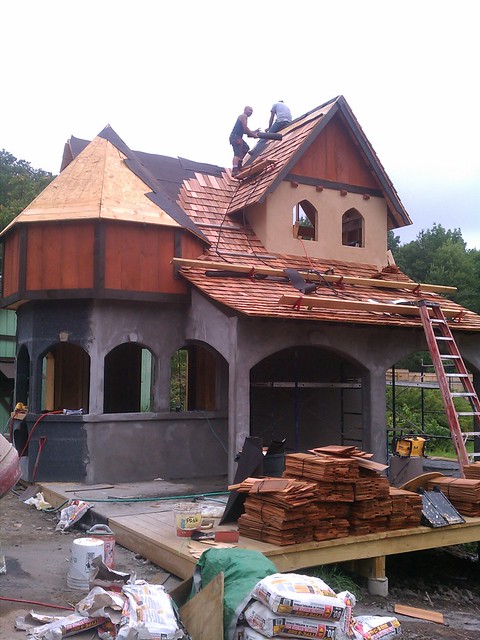Every industry has rules. The trick is in knowing how to get what you want while meeting the rules. Venues with a historical theme have tons of several restrictions that help create the environment that fools the public into the fantasy that they are visiting a 16th century village. I won’t get into the finer points on costume rules and building design here, but I will talk about one control that shows up in both those departments. Color restrictions.
There are real reasons for having color restrictions in a historical venue. The technology wasn’t yet invented that could create a hot pink piece of fabric, or a vibrantly purple stucco wall. At least, there was no “affordable” technology that did so. Renaissance Festival costume rules almost universally prevent anyone other than royal characters wearing purple. Apparently in the 16th century, the only source for a purple dye was found in a type of muscle shell found in the Mediterranean Sea, and you needed a lot of them. All of the colors used during the Renaissance Period were from natural sources. Vegetable dyes faded fairly quickly, so the palette of the working class was soft and earthy. I’m not a professional costumer, although I have good friends that are. The end of the color issue that I know better is the one where color restrictions are applied to buildings.
Much like a mall lease contract, contracts for the vendors at a Renaissance Festival or Faire require they do their own “build-out”. They build, or pay to have built, the shops that they will be vending from at that particular festival. Designs have to be approved by the Vendor Coordinator, and perhaps the Site Director and General Manager as well. Each show is an independently owned company with only a few exceptions in the industry, so they’ll each have their own set of hoops for one to jump through. In the best cases, the proposed building design also has to meet with the approval of a Building Inspector.
Because buildings are each designed by an individual, with rare consideration of their neighbors’ designs, the color rules protect us all from garishness. If the color choices were not controlled, each vendor’s desire to be more readily seen than their competitors would quickly spiral upward into a visual cacophony. It happens sometimes even with the color safeguards in place. I myself am guilty of renaming a color when making my building design proposal to management, because it sounded far too purple otherwise. (Smart building coordinators require paint chips with the proposal.) Fortunately, Park Management has final design control, and can easily tell a vendor to repaint if the color choice was a bad one. In most cases management is considerate to time restraints and may even let someone get a season’s use with the bad color before having to change it for the following season.
I designed and built shops for vendor clients for many years. (Actually, I designed, my husband built, and I painted and trimmed the buildings.) In conversations with my clients, I’d coach them on how to be creative within the color restrictions. I was not telling them how to bend the rule; I like the rules. But, I found that the best explanation was to tell them to “Put some dirt into the color that they most like, and it will probably qualify as an acceptable color.” It was a simplification, but one that communicated well. This is because, while vegetable dyes were used in fabrics, almost all colors used in the building trades came from mineral sources. So I’d ask a client for 3 colors, help them make choices that worked well together, and then if one of those colors was something that would have been more difficult, it became the smallest of the accent colors. In other words, no dark green walls, but perhaps some dark green trim.
It isn’t that any of this is rocket science. But the builder has to care about the illusion that she is helping to create. Renaissance Faire builders are amongst the luckiest designer/builders in the country. They get to design whimsical structures that actually come to fruition. More often than not, they are building inside a private park, and they rarely, if ever, have to build the same thing twice. Caring about the “whys” of the color rules just makes them better at their jobs.

I was wondering if you still design booths? I need to get one designed for the Kansas City show thank you for your time